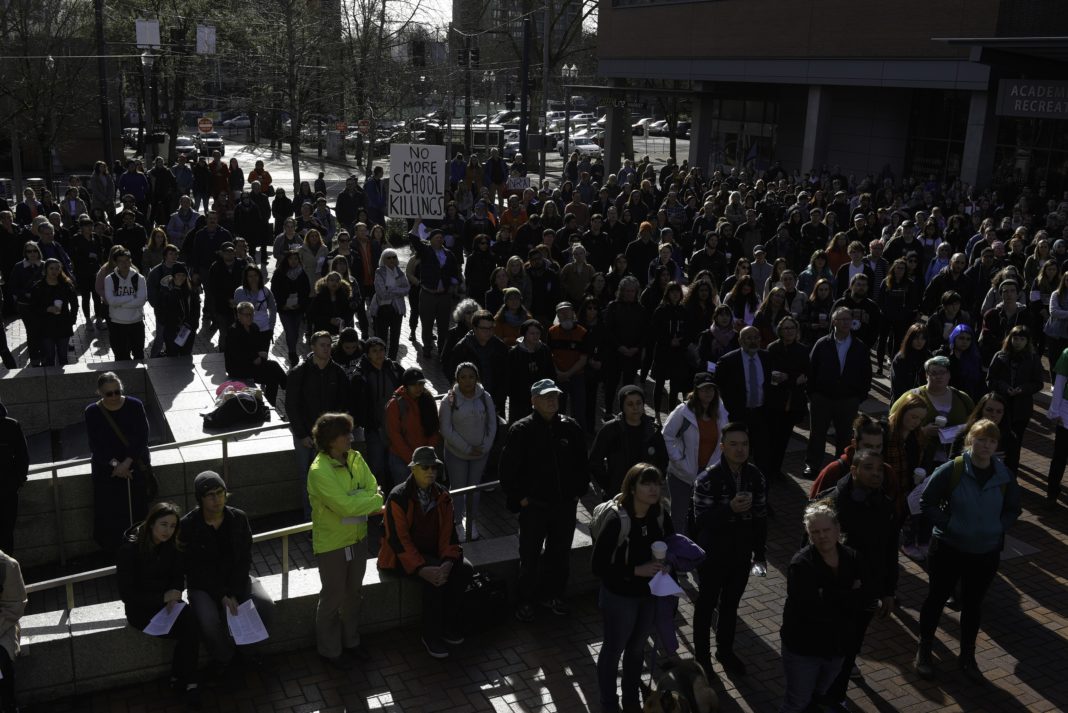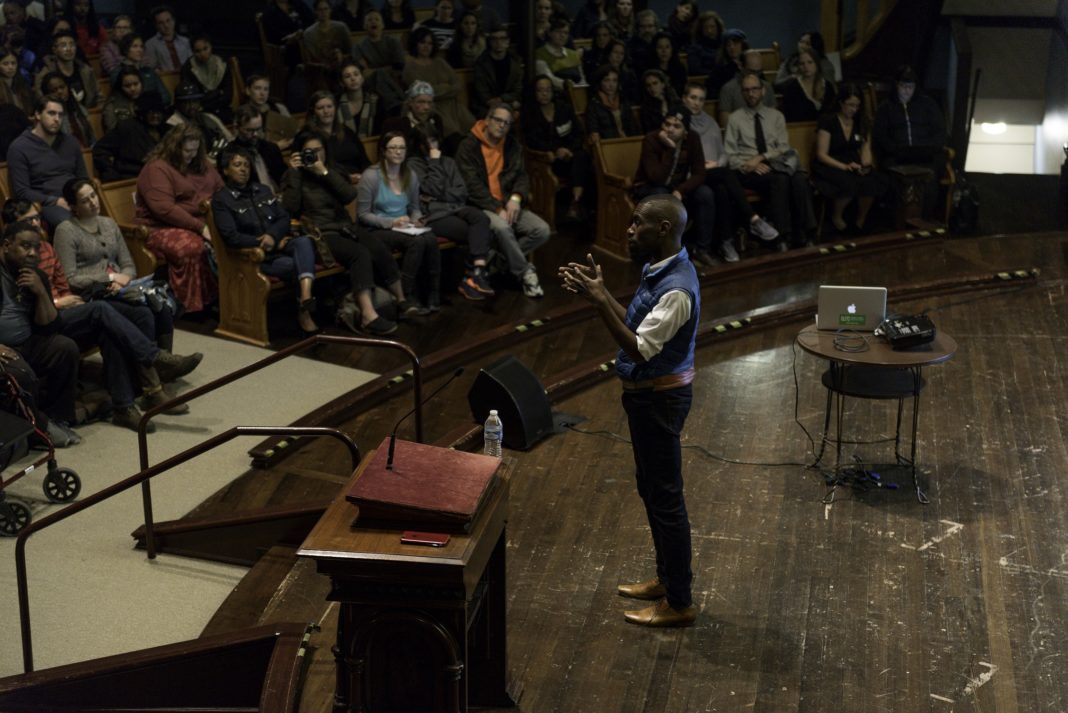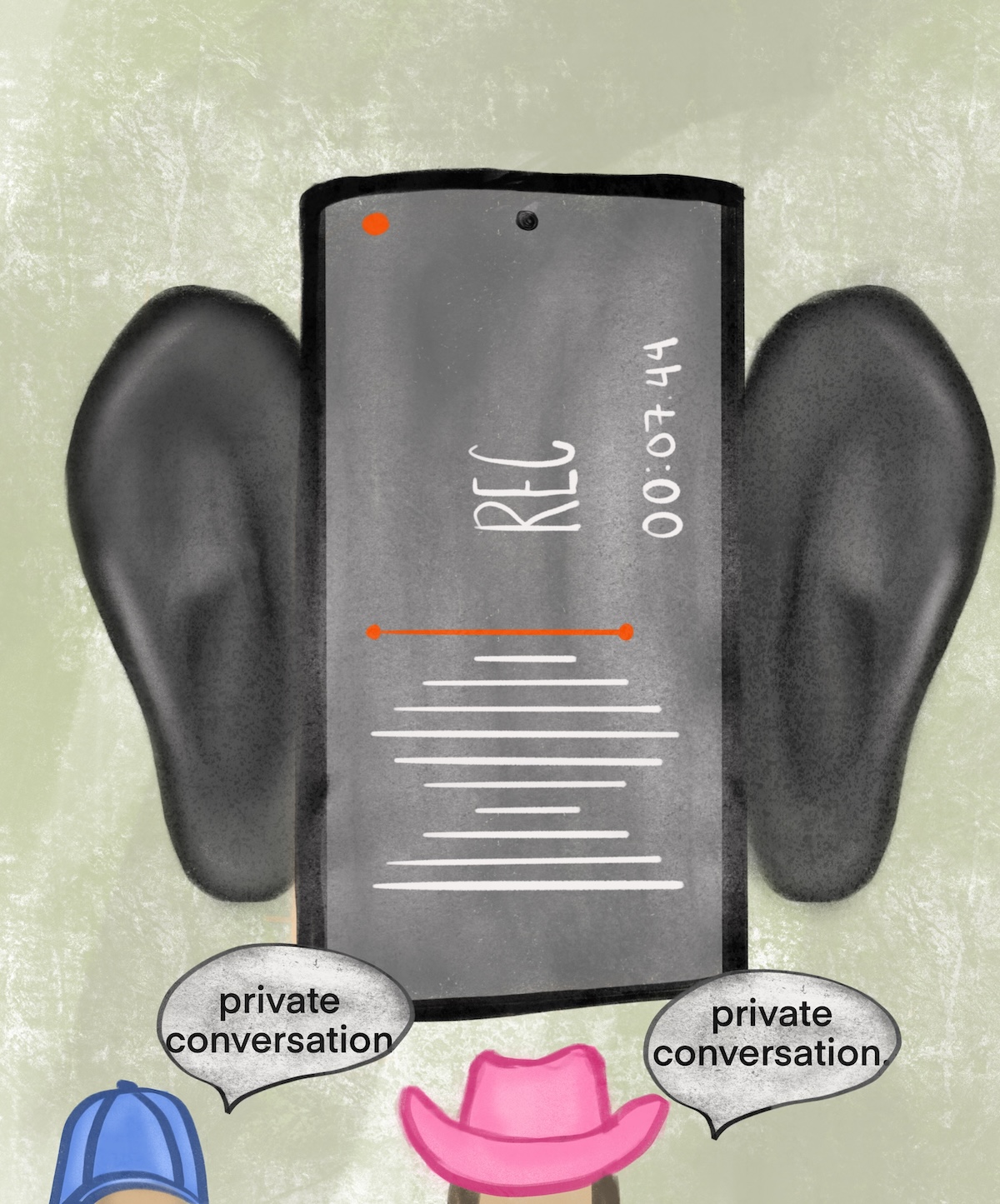At 10 a.m. Wednesday, March 13, one month after the shooting at Marjory Stoneman Douglas High School in Florida, Portland State students walked out of class and gathered in the Urban Plaza to protest Congress’ lack of action regarding gun control. The walkout, which lasted 17 minutes to honor the 17 victims was part of #neveragain, a student movement demanding safer schools.
According to Al Jazeera, in response to the shooting, Florida raised the age to purchase a gun from 18 to 21 years old. The Department of Justice has also put forth a plan to ban bump stocks, a type of gun modification that increases the speed of semi-automatic rifles.
Putting stricter regulations on gun ownership is part of an effective solution. According to Epidemiologic Reviews, a 2016 meta-analysis in which data was collected from 130 studies in 10 countries, laws restricting firearms resulted in less firearm deaths.
Gun violence and mental health
Although gun regulation is a vital step in solving the United States’ mass shooting crisis, the solution is far more intricate. Another aspect of gun violence is mental health.
When students act out, it’s labeled delinquency. However, violent behavior and language should be addressed and treated by a psychiatrist. Identifying those problems early on can help professionals provide the necessary therapy and treatment for individuals living with mental health issues.
“We know so much about how to help someone who is suicidal, and those same resources can be used very effectively with someone who is planning to engage in school violence,” said Marisa Randazzo, a chief psychologist for the Secret Service in an interview with FiveThirtyEight.
Randazzo suggests a surprising way to spot school shooters before the shooting: listening to them. As the article continues that studies have shown school shooters and potential school shooters share their plans with others, as well as outwardly talk about their anger and suicidality. As school shootings increase in numbers, this pattern has proven true over time. It was also true in the case of Nikolas Cruz, the Parkland shooter.
Listening to the warnings of would-be shooters as a means of prevention has proven effective. Four potential school shootings after Parkland were averted because someone told law enforcement after the would-be shooters shared their plans with them.
The gendered phenomenon of gun violence
School shootings are noticeably gendered events. Most mass school shooters are male. A possible element of the gun violence epidemic could lie within the way males are socialized in the US and the effects this socialization has on their mental health.
According to Psychotherapist Dr. Daniel Seidman, “Men don’t like admitting, or even recognizing, when they feel helpless.” From before they can even walk, boys are continually exposed to violence. Just look at the boys section of any toy store.
Dr, Seidman also stated that most men are mocked for receiving mental health counseling and expressing emotions in healthy ways. This combination of repression of emotion and violence as the only acceptable outlet could lead some men to inflict violence upon others as an emotional release.
In this society where little is invested into the mental health of school-age boys, we should first be more focused on identifying the signs of poor mental health and providing help, then using these signs as indications of possible future violent behaviors.
In a study by Mother Jones that analyzed 62 mass shootings in the US from over the last 30 years, delusions, acute paranoia and depression were rampant among the shooters, and at least 36 of the shooters committed suicide following the mass shooting.
Walkouts, protests and demand for gun control is only part of the solution. We must not only target gun laws but also focus on preventative and early detection measures within our mental health field.






